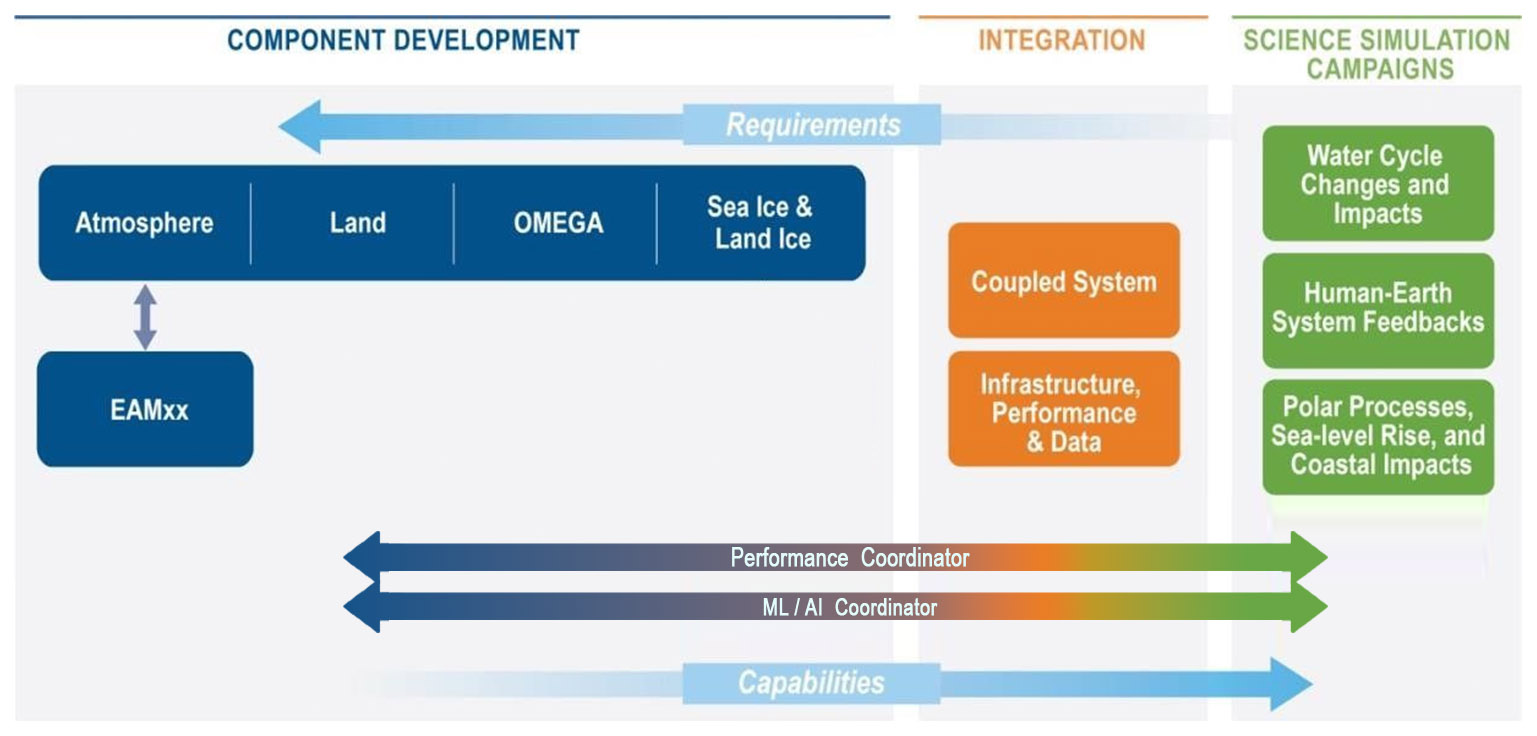Organization
The E3SM project is a DOE BER Science Focus Area (SFA) project and is funded in 3-year periods after a successful proposal. The project refers to each funding period as ‘an E3SM Phase’.
Phase 1 of the project marked its beginning, spanned from 2014 to 2018, and focused on developing E3SM coupled model version 1.0 (E3SM v1.0) and using it to perform the CMIP6 DECK experiments and the E3SM v1 simulation campaign.
Phase 2 of the project started in July of 2018 and lasted till the end of 2022. It focused on delivering version 2 of the model and began transitioning the model to be compatible with exascale computing architecture. A brand new global atmosphere model with ~3km resolution horizontal grid spacing, cloud-resolving model (EAMxx), was built from scratch using C++ and Kokkos to efficiently run on exscale GPU/CPU machines and was shown to achieve a major milestone of more than 1 simulated year per day on the new Frontier exascale supercomputer.
Phase 3 of the project started at the beginning of 2023 and is expected to last until 2026. It focuses on delivering E3SM version 3 building on the E3SM v2 model, with substantially reduced biases, enhanced connection to the human-earth interactions component, and moving more components to exascale-ready performance for the v4 coupled exascale-ready model.
Figure 1 shows the Phase 3 functional organization. In general, the flow of model development (deliverables) moves from component development to science simulation campaigns (left to right across the figure). The longer-term computational and scientific development for future E3SM versions is done in the component groups, in which are embedded both domain and computational scientists. Our experience in Phase 2 with EAMxx demonstrated that co-development of exascale codes at the component level is optimal. Conversely, requirements move from science simulation campaigns to component development (right to left across the figure), with the science questions dictating development priorities and computational throughput requirements. We represented the organization in this way to avoid the perception that the groups exist in a hierarchy. Rather, the structure is organic and the box boundaries permeable. Unlike the current organization, the new organization will have permanent members to provide continuity and ensure sufficient effort to meet priority Phase 2 Progress.



